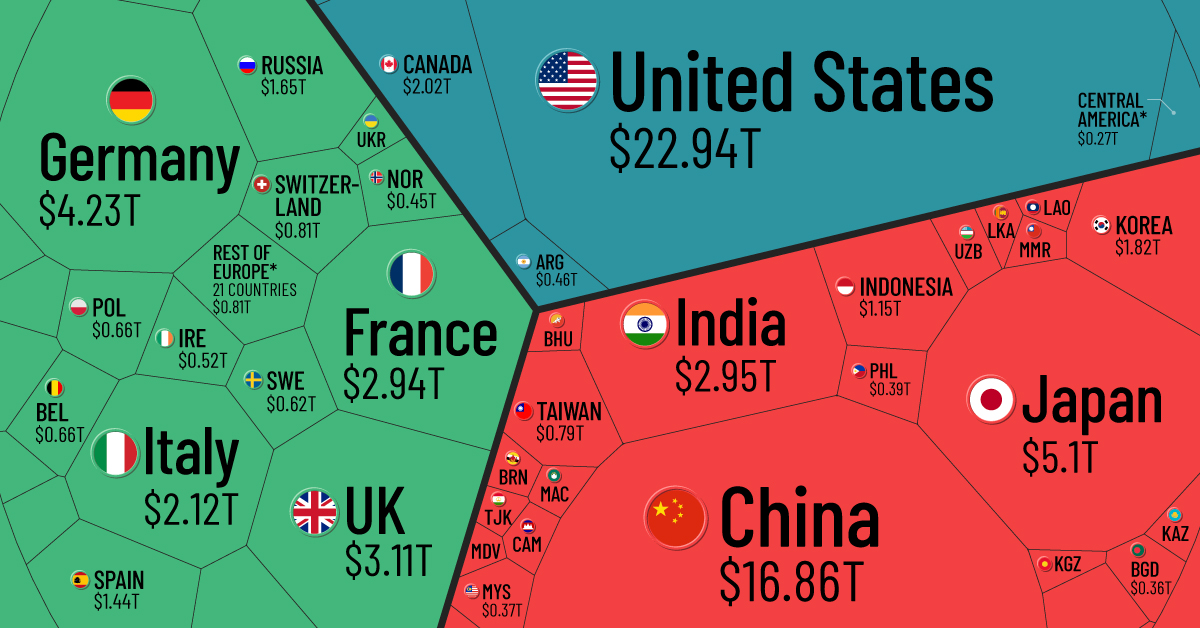Understanding how countries' economies collapse is vital to grasping the complexities of global financial systems. Economic collapse can occur due to a combination of internal and external factors, resulting in severe consequences for a nation’s citizens and the global economy. This article explores the various causes, signs, and examples of economic collapse.

1. Poor Governance and Corruption
One of the primary drivers of economic collapse is inadequate governance. When a government is inefficient, lacks transparency, or is riddled with corruption, resources are mismanaged, and public trust erodes. Corruption diverts funds away from essential services like education and healthcare, stifling economic growth. Countries with corrupt practices often experience a lack of foreign investment, leading to stalled development and eventual collapse.
2. Poor Economic Policies
Economic policies that fail to adapt to changing conditions can lead to instability. For instance, fixing exchange rates without sufficient foreign reserves can create an imbalance. Similarly, excessive borrowing can lead to high debt levels, making it difficult for governments to meet their obligations. If a government chooses to print more money to cover debts, it may lead to hyperinflation, which can decimate savings and reduce purchasing power.
3. High Levels of Debt
A nation that accumulates unsustainable debt may find itself unable to repay loans, resulting in defaults. This situation can trigger a loss of confidence among investors and creditors, leading to a withdrawal of capital, devaluation of currency, and cuts in essential government services. High levels of debt can occur due to both public spending and private sector borrowing. When economic conditions worsen, the burden of this debt becomes unbearable, leading to a systemic crisis.
4. Economic Imbalances
Economic imbalances, such as trade deficits, can lead to economic collapse. When a country imports significantly more than it exports, it may rely on foreign funds to cover the gap. If these funds become unavailable, or if the currency depreciates sharply, the country may find itself in a dire situation. Moreover, overreliance on a single sector, like oil or agriculture, can also create vulnerabilities, particularly if market prices drop.
5. Social Unrest
Widespread social unrest can destabilize an economy rapidly. High unemployment, rising prices, and ineffective government responses can spark protests and civil disobedience. As unrest escalates, businesses may close, investments may dry up, and essential infrastructure can be damaged or neglected, leading to a downward spiral that is hard to reverse.
6. Global Economic Conditions
Global economic trends can have significant implications for national economies. For instance, a global recession can lead to decreased demand for exports, affecting countries reliant on trade. Sudden changes in commodity prices can also impact nations heavily dependent on specific resources. Countries that do not diversify their economies are particularly vulnerable during global downturns.
7. Natural Disasters and Pandemics
Natural disasters, such as earthquakes, hurricanes, or floods, can devastate an economy by destroying infrastructure, homes, and livelihoods. Similarly, pandemics, like COVID-19, can disrupt economies by imposing restrictions, reducing consumer spending, and leading to widespread unemployment. These events can strain government resources, exacerbating existing vulnerabilities and potentially leading to collapse.
8. Loss of Confidence in the Currency
When a currency loses its value rapidly, often referred to as hyperinflation, the populace may lose faith in it as a medium of exchange. This loss of confidence can lead to economic chaos, as people prefer to barter goods and services rather than use a
devalued currency. In severe cases, countries might adopt foreign currencies, further undermining their economic sovereignty.
9. Historical Examples of Economic Collapse
Throughout history, there have been notable examples of economic collapse.
- Zimbabwe: In the late 2000s, Zimbabwe experienced hyperinflation, peaking at an astronomical rate of over 89.7 sextillion percent month-on-month in November 2008. The government’s reckless printing of money and a decline in agricultural production led to the economic collapse, causing widespread poverty.
- Weimar Republic (Germany): After World War I, Germany faced crippling reparations, massive debts, and hyperinflation. By 1923, the currency had become virtually worthless, and people resorted to bartering. Social unrest and economic instability contributed to the rise of extremist political movements, leading to significant historical consequences.
- Greece: The Greek debt crisis, which began in late 2009, showcased how unsustainable borrowing coupled with a recession can collapse an economy. Austerity measures imposed by international creditors led to severe social discontent, striking unemployment levels, and deep economic depression.
Conclusion
Economic collapse can occur due to a myriad of factors, and each situation is unique, influenced by the interplay of domestic and international elements. Understanding these causes enhances our comprehension of economic systems and the importance of sound economic governance. Countries must foster resilience through diversification, prudent fiscal policies, and transparent governance to avert the risk of collapse. Through historical examples, we can learn valuable lessons on the consequences of neglecting these fundamental principles.












